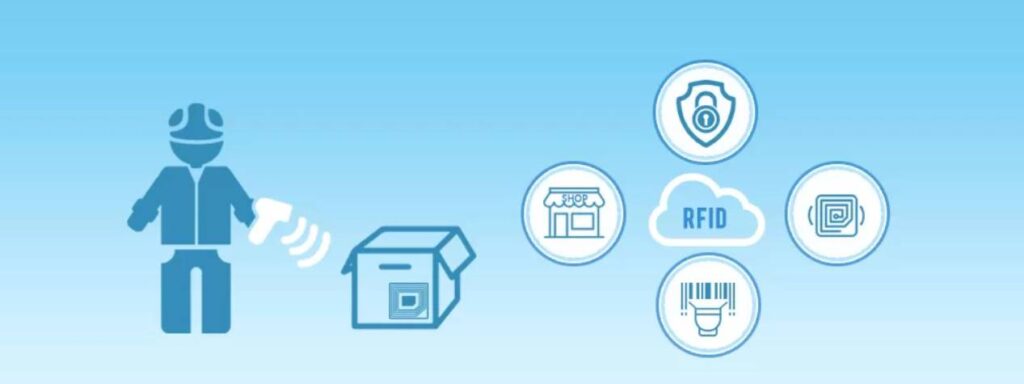No matter, how appeasing any technological advancement may be, it eventually commands furtherance. Radio Frequency Identification (RFID) is one such invention in tracking technology, made to replace Barcodes, being their faster, wireless and sturdy alternative, though the complete replacement of Barcodes is still a question. The technology uses radiofrequency waves to retrieve information or data for identification of products, aims to go beyond product labelling and is looked upon for some really mindboggling applications in various industries in future.
With RFID application to detect the enemy asset in second world war, the tracking technology has got on with commercial applications too.
Ever cerebrated over that tiny microchip tucked secretly in your newly bought branded Tee or even in your new jogging sneakers?
Well, these are the technological means adopted by luxury brands to intercept counterfeits by local brands selling fake products in the market.
How Do RFID Tags Work?
It is interesting to note that, these tiny convoluted squares are loaded with a really complex set of micro-devices like a microchip, antenna, case and also a battery – the internal source of power, if it’s an active tag. When the data reading device is brought to face a passive tag, it produces electromagnetic field to generate current in the antenna that powers the chip placed in the center of the tag. The chip transmits all the information in it to the reader which is further sent to the database maintained in computer system. During this process, the tag is required to stay powered continuously and a condenser assures so.
In a semi-passive tag, only the chip stays powered, while the antenna doesn’t as it is not required to transmit information. It is powered just to increase the reading range, whenever required.
The active tags contain a battery which keeps both the microchip and antenna powered. They enable far quicker data retrieval both from the tag and database as well. The database where the retrieved information is sent, replies with current price and also the additional information like ongoing discount or any other scheme related to the product.
Barcode Tags Still there! Where are RFID Tags?
A RFID reader can read as many as 20 tags in just one go while a Barcode reader needs to placed and aimed at the tag for correct data retrieval. RFID tags simplify the process complexities in inventory system, being a step ahead of Barcodes.
So you will be expecting those exciting microchips snuggled in your pair of boxers, right? Well, be prepared for the disappointment as Barcodes don’t seem to be replaced by RFID tags, at least in near future. The culprit is relatively higher cost of RFID tags as compared to Barcodes which are simply printed on product packs only.
Despite the fact that RFID had already been invented and is in application since decades, yet it could never get as much acceptance to be able to take over the tracking process completely from Barcodes, especially in retail industry. Products still carry Barcodes, as RFID tags will be too expensive to be made for every product. The quest for methods of producing cheaper tags is still on!
Know about the technology behind Barcodes!
RFID Technology – Towards Astonishing Promises
While at one corner of the lab, where attempts are being made to produce cheaper RFID tags, the other corner is buzzing with getting smaller, infact micro-size tags. These tags measurable in microns, still need to be tinier so that they can be implanted in human cells for better tracking and understanding of them as well as the cancer cells floating in the body. This will be a trail-blazing step towards cancer treatment and prevention utilizing RFID technology.
The Role of RFID Technology in Improving Safety During COVID Pandemic
Even at this time, when the entire world is at pause due to the pandemic, the RFID technology is implemented by the hospitals for managing the safety of patients and staff members alike.
With the help of wireless communication, the medical equipments are identified and tracked. The technology is playing an amazing role in keeping a tab on the hospital staff, by finding out if the hygiene protocols are followed by them or not. It is this technology that is being used to track the movements of employees, tracing the infection with precision. The infected person’s records are reviewed to determine their points of contact, etc.

